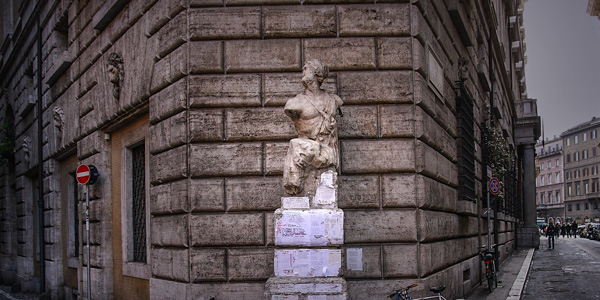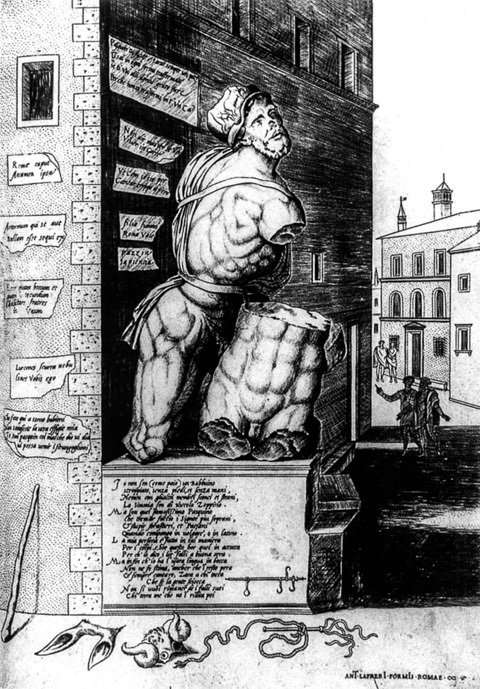

The tradition is by no means dead—though Latin is rarely used these days, and it has evolved into pasted-up computer print-outs and scrawls of graffiti on the surrounding walls. (Though of late, most Romans have learned simply to paste papers to Pasquino's pedestal, or on a board leaning against the wall.)
Pasquino and his friends (the fellow statue parlante, or "talking statues" of Babuino, on Via del Babuino, and Marforio, on the Campidoglio, as well as several busts in the Villa Borghese and atop the Gianicolo) continue to hold forth on everything from Italian popular culture to political scandals to the European financial crisis.
Pasquino himself is named after one of the earliest and most famous of these Roman wags, a late medieval agitator who, though anonymous, was widely known to be a local barber named Pasquino.
A few years ago, the Palazzo Braschi against which the Pasquino stands was being worked on. As work began, the workmen erected—as they usually do on sch jobs—a plank board wall all around the base of the building. Within days this wall was slathered in posters, papers, and graffiti, most with messages along the lines "Help, I can't see!" and "Hey, where did everybody go?" and "You cannot silence Pasquino!"
By the following week, workers had re-jiggered the wall so that it tucked in to either side of Pasquino, revealing him to the public once again and allowing him to hold forth in freedom.
Piazza del Pasquino, just off the southwest corner of Piazza Navona
Daily
Free
Bus: 46, 62, 571, 916, 916F, N5, N15, N20
Planning your day: Not much time is needed to view this sight. Take a few minutes to read the banter and messages of the statue from the city.
Take a guided tour that visits Pasquino with one of our partners:
Share this page
Search ReidsItaly.com
Piazza del Pasquino, just off the southwest corner of Piazza Navona
Daily
Free
Bus: 46, 62, 571, 916, 916F, N5, N15, N20